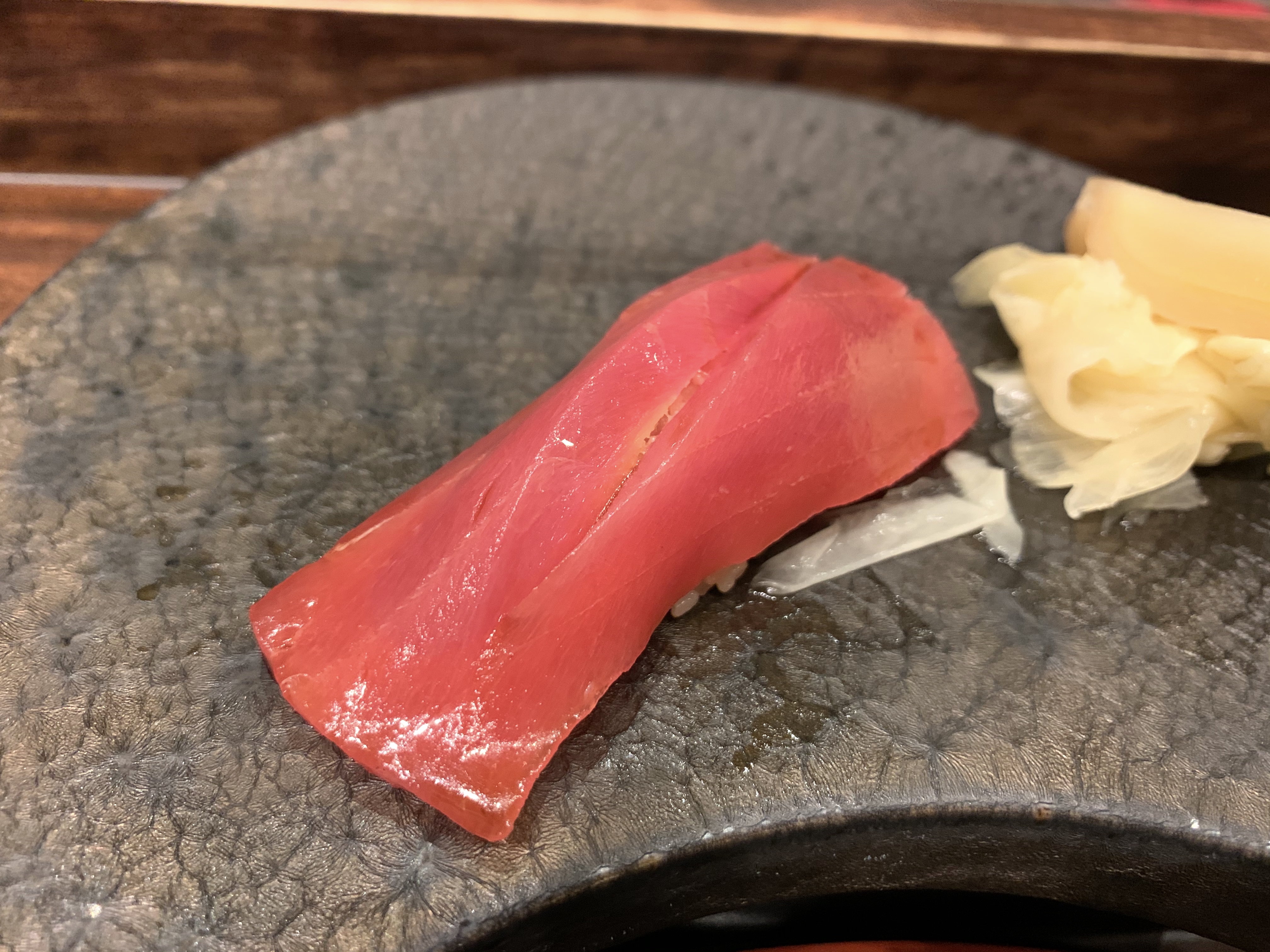My sister and brother started a tradition many years ago of making their Christmas presents to one another dinner at a restaurant they wouldn’t ordinarily go to, and while my gift to my brother these days is usually made up of copious amounts of cheese and other raw milk dairy, he still often gives a restaurant as a gift. This year, he outdid himself with Sushi Jin.
Sushi has long been a passion we share, and we did a few omakases in the city before discovering Sushi Yasaka, where the lunchtime mini-omakase (followed by a cookie at Levain) is one of our favorite ways to make a random Tuesday special. But Sushi Jin is different. This relatively new spot tucked away on an unassuming block in Yorkville offers a creative omakase that is very reasonably priced for the quality. Oh boy, is there quality.
The standard omakase at Sushi Jin always begins with an appetizer. On the day that we visited, this was a combination of Kyoto tofu skin and Maine sea urchin with soy sauce, nori, and a touch of wasabi. It was presented in a beautiful glass, but the server informed us that we should stir everything together before indulging. After doing as we were told, the full combination of flavors revealed itself: with a texture and creaminess reminiscent of stracciatella, the appetizer boasted a flavor that was slightly sweet with the lightest afterkick of the wasabi, which we watched being freshly prepared before our eyes.
Our first of the ten pieces of sushi included in the standard omakase was this red snapper, served with a generous dose of lemon zest. It was, indeed, the lemon that packed the biggest punch: its aromas were both the first and last flavor surrounding the soft, mild fish.
The next bite boasted a hint of lemon too, this time in the form of lemon juice. But the lemon on this piece of yellowtail was just barely perceptible: instead, the rich, fatty, thickly cut fish took center stage.
Next up was a flame-broiled piece the chef described as a Japanese scallop, though the look of the shell was far more like that of a giant mussel, and the flavor and texture of the fish far meatier, almost veering towards abalone. We were instructed to wrap the ultra-crisp nori around it before taking a bite, so both the scallop and the seaweed retained their juxtaposing textures.
I am a huge sardine fan, so when marinated spotted sardines were up next, I was thrilled. This piece didn’t just boast a pretty, braided aesthetic; it was also perfectly balanced in flavor. Acidic, briny, meaty, and just a little bit sweet, this was a real winner.
Piece number five, however, proved to be my favorite of the day. This Arctic char from Alaska was so good I chewed it far longer than the melt-in-your-mouth fish required: I just didn’t want this bite to end. With a hint of spice and some smokiness to cut the richness of the fish, it was perhaps the perfect bite.
The golden eye snapper that followed was comparatively more subtle: the mild fish was paired with a soy sauce that boasted a pleasant note of fermentation.
A second member of the yellowtail family – amber jack – followed, with a lemony freshness that then dissipated as the sheer butteriness of the fish came through – so buttery that it almost had the funk of a great triple cream cheese.
The mantis shrimp that followed almost had a lobstery taste and texture – something that isn’t at all surprising when you realize that the “shrimp” is its name is a misnomer. (Weird aside: did you know that mantis shrimp have incredible vision?)
The end of the omakase pivoted towards tuna: three, to be precise. This happens every Wednesday, when the chef gets his hands on the best tuna.
We started things off with lean tuna from Greece. Meaty and richly flavored, this was the piece that reminded us the most of the sushi we enjoyed last year in Tokyo.
Next was my favorite of the three: the medium fatty toro. Like beef tenderloin, this was melt-in-your-mouth tender and richly flavored.
The fatty toro – rich and sweet – nevertheless proved slightly sinewy as compared to its less fatty sibling. The chef let us know that he selects smaller tuna for their sweetness, and it really paid off in these pieces.
The last piece in the omakase was eel, but a very different kind than one usually finds in American Japanese restaurants. This eel is sea eel from Tokyo, with a meaty texture and only the barest hint of sweetness in the sauce.
As we sat and chatted with the chef, he passed us one more piece: chopped fatty tuna wrapped in nori. This was perhaps my second-fave of the night.
The omakase ends with clam miso, rich and aromatic…
… followed by a mango panna cotta which, while delicious, I really didn’t need: the freshly made cup of matcha served alongside it would have sufficed.
This omakase was a phenomenal experience, and at $95 for 10 pieces, soup, appetizer, and dessert, it’s not a bad deal, either.
Sushi Jin – 316 E 84th St, New York, NY 10028

















